How Many Lithium Cells Are Needed to Build a 12V Battery
Building a 12V battery using lithium cells requires a comprehensive understanding of voltage, current, and capacity. In this article, we will explore the necessary steps and calculations involved in assembling a reliable 12V battery with lithium cells, and how to optimize performance while maintaining safety. Whether you are creating a backup power system, electric vehicle battery pack, or just curious about lithium battery technology, understanding the number of lithium cells required is key to building an efficient 12V battery.
- Introduction to 12V Batteries
- How Lithium Cells Work in a 12V Battery Setup
- Voltage Range and Cell Configuration for a 12V Battery
- How to Choose the Right Lithium Cells for Your 12V Battery
- How Many Cells Do You Need for Higher Capacity?
- Safety Considerations When Building a 12V Battery
- Different Types of Lithium Cells for 12V Battery Applications
- Final Thoughts on Building a 12V Lithium Battery
Introduction to 12V Batteries
When we discuss the design of a 12V battery, it’s crucial to understand the basic components that make up the power source. A 12V battery typically consists of multiple individual cells wired together in series and parallel to achieve the desired voltage and capacity. Lithium cells, with their superior energy density, longevity, and lighter weight compared to traditional lead-acid batteries, have become the go-to solution for modern power systems.
The first key factor in constructing a 12V battery is the voltage. Lithium-ion cells, which have a nominal voltage of 3.6V or 3.7V, need to be arranged in a series to reach the 12V output. But how many cells exactly are needed? In this section, we’ll break down the answer and help you calculate the number of cells required.
>>See also Can I Charge A 5V Battery With A 12V Charger
How Lithium Cells Work in a 12V Battery Setup
To determine how many lithium cells are required for a 12V battery, it’s important to start with the voltage of a single lithium-ion cell. The nominal voltage of a lithium cell is around 3.7V. The maximum voltage when fully charged can reach 4.2V, and the minimum voltage is about 3.0V.
In order to achieve a 12V output, you need to connect enough cells in series to reach that voltage. The required voltage can be achieved by connecting cells in series, each contributing 3.7V. To calculate how many lithium cells are necessary to build a 12V battery, use the following formula:
Number of Cells = Desired Voltage ÷ Nominal Voltage per Cell
So, for a 12V battery, the calculation would be:
Number of Cells = 12V ÷ 3.7V ≈ 3.24 cells
As you can’t have a fraction of a cell, you would round up to the next whole number, which means you need 4 lithium cells to achieve a nominal voltage of approximately 12V.
Voltage Range and Cell Configuration for a 12V Battery
While the nominal voltage of a lithium cell is 3.7V, as mentioned earlier, the voltage can range from 4.2V (fully charged) to 3.0V (discharged). This fluctuation means that a 12V battery will operate at different voltage levels as the cells charge and discharge.
- When fully charged, 4 lithium cells will provide a voltage of 16.8V (4.2V × 4).
- When discharged to 3.0V per cell, the voltage will drop to 12.0V (3.0V × 4).
- When at nominal voltage, the battery will operate at approximately 14.8V (3.7V × 4).
Thus, while 4 cells in series will give you an effective 12V output, the actual voltage will vary depending on the state of charge.
How to Choose the Right Lithium Cells for Your 12V Battery
When selecting lithium cells for a 12V battery, it’s important to consider several factors beyond just voltage. Capacity, discharge rate, and lifespan are all critical aspects that will affect the performance of your battery.
Choosing Lithium Cells with Sufficient Capacity
Capacity is measured in ampere-hours (Ah) and represents how much charge the battery can store. For example, if you use a 3.7V lithium cell with a capacity of 2500mAh (2.5Ah), and you connect four cells in series, you will get a 12V battery with a capacity of 2.5Ah. To increase the capacity of your 12V battery, you can connect multiple cells in parallel.
Discharge Rate of Lithium Cells
The discharge rate, typically represented as a "C" rating, indicates how quickly the battery can deliver power without overheating or damaging the cells. A higher C-rating means the cells can discharge more rapidly, making them ideal for high-power applications like electric vehicles. For a 12V battery, make sure to select lithium cells that are capable of handling the load you intend to place on the battery.
How Many Cells Do You Need for Higher Capacity?
If you want a 12V battery with a higher capacity, you will need to connect more cells in parallel. For example, if you require a 12V battery with a capacity of 10Ah, you can use 4 lithium cells in series, each with a capacity of 2.5Ah, and connect additional cells in parallel to achieve the desired capacity. Here’s how:
- To achieve 10Ah, you will need 4 cells in series (for 12V) and 4 additional cells in parallel (each with 2.5Ah) to reach a total of 10Ah.
In this configuration, you will need 8 lithium cells to build a 12V battery with a 10Ah capacity.
Safety Considerations When Building a 12V Battery
Building a 12V battery from lithium cells can be a great DIY project, but it’s essential to prioritize safety. Incorrect wiring, overcharging, and short-circuiting can lead to dangerous situations. Here are a few safety tips:
- Use a Battery Management System (BMS): A BMS ensures that the cells are balanced and prevents overcharging, deep discharge, and overheating.
- Fuse Protection: Always use a fuse between the battery and the load to protect the battery from short circuits or excessive current draw.
- Avoid Overcharging and Overdischarging: Lithium cells are sensitive to voltage extremes. Use a charger that is specifically designed for lithium-ion batteries.
Different Types of Lithium Cells for 12V Battery Applications
Not all lithium cells are created equal. There are different types of lithium-ion cells, such as LiFePO4 (Lithium Iron Phosphate) and LiCoO2 (Lithium Cobalt Oxide), each offering different advantages. For building a 12V battery, LiFePO4 cells are often preferred for their safety, long cycle life, and stable chemistry.
- LiFePO4 (Lithium Iron Phosphate): These cells have a lower energy density than other lithium-ion types, but they are much safer, with a longer lifespan and more stable voltage characteristics.
- LiCoO2 (Lithium Cobalt Oxide): These cells offer higher energy density, making them suitable for applications requiring more compact power, but they can be less safe and more expensive.
>>See also 4Ah Vs 6Ah Battery, Is A Higher Ah Battery Better
Final Thoughts on Building a 12V Lithium Battery
In conclusion, the number of lithium cells required to build a 12V battery is typically 4, based on the nominal voltage of 3.7V per cell. However, depending on your power needs, you may want to adjust the number of cells in series and parallel to achieve the desired voltage and capacity. By carefully selecting your lithium cells and prioritizing safety measures, you can create a high-performing, reliable, and efficient 12V battery for various applications.
Understanding how many lithium cells are needed to build a 12V battery is only the beginning. The careful selection of cells based on your specific needs, as well as proper configuration and safety considerations, will determine the overall success of your battery system.
By following the principles outlined in this guide, you can confidently create a 12V battery that meets your performance goals. Whether you are working on a small solar project or a larger energy storage system, the key to success lies in proper cell selection, configuration, and safety protocols.
In summary, building a 12V battery requires careful planning and understanding of the voltage and capacity needs. Typically, 4 lithium cells are needed in series to reach a nominal voltage of 12V, but additional cells may be necessary to achieve higher capacity. Always prioritize safety and make sure to choose the right type of lithium cell for your specific application.

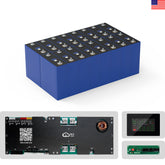

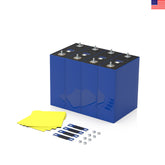
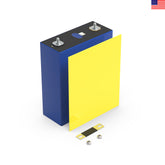
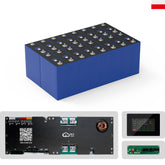

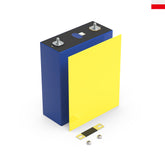

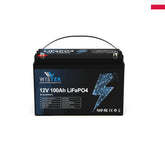
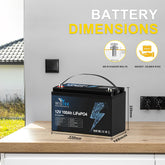
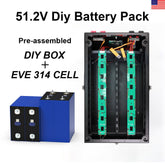

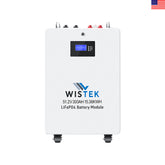
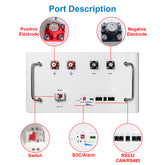
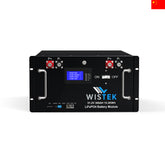
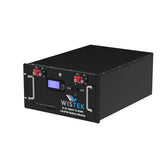


Leave a comment
All blog comments are checked prior to publishing